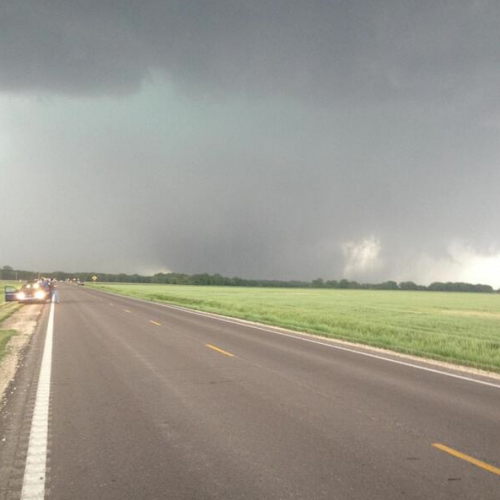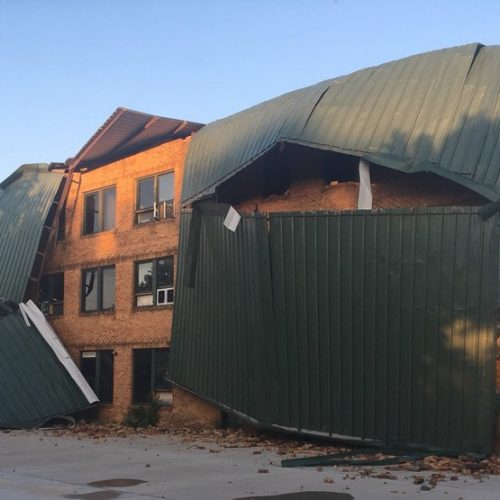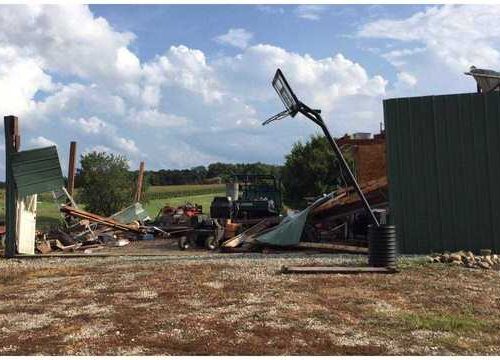A powerful winter storm that roared out of New Mexico three days ago was pushing through New England on Saturday, leaving floods, twisters, heavy snow and power outages along its 1,500-mile path.
At least five deaths were blamed on the fast-moving storm in Alabama, South Carolina, North Carolina and Tennessee.
The storm, which generated at least 11 tornadoes in three states, knocked out power to more than 400,000 homes, as winds gusts up to 60 mph knocked down trees and power lines along its path.
North Carolina and Virginia, where hundreds of people had to be pulled from flooded homes, had the most customers without electricity, according to poweroutages.us.
In North Carolina, a driver later identified as Terry Roger Fisher was killed when his vehicle hydroplaned and plunged down a 25-foot embankment, WBTV reported, citing the State Highway Patrol.
In South Carolina, one unidentified driver died when a tree toppled onto his car in York County, according to local media reports.
An unidentified man died and two others were injured Thursday when a car hydroplaned in Knoxville, Tennessee, and hit a truck, police said in a news release.
And in Tennessee, 36-year-old teacher Brooke Sampson was killed and four people were injured when a rain-soaked tree fell on a van carrying Sevierville city employees, officials said.
At least four tornadoes touched down around Charlotte, North Carolina, on Friday, including one packing 130-mph winds that was “snapping and uprooting trees” and knocked down high tension lines, according to the National Weather Service.
The National Weather Service was using radar data and making damage assessments to confirm many reports of twisters touching down in Virginia and Maryland, near the nation’s capital, meteorologist Isha Renta told the Associated Press.
With water levels rising rapidly, the Tennessee Valley Authority said it began making controlled releases from some of its 49 dams in Tennessee, Georgia, Alabama and North Carolina. People living near the rivers downstream were cautioned to look out for additional flooding, said James Everett, senior manager of the TVA’s river forecast center in Knoxville, Tennessee.
In Alabama’s Buck’s Pocket State Park, rangers in near freezing temperatures walked along a swollen Souty Creek in a vain search for a car carrying one person that had disappeared under the surface two days earlier, WHNT-TV reported.
“The weather is better, but the water is not. The water is several feet higher than normal. It’s extremely high and fast,” Alabama Trooper Chuck Daniel said. “Until that water slows down, nobody’s going to get in that water.”
In Kentucky, Gov. Andy Beshear declared a state of emergency in eight counties on Friday because of flooding in the southeastern part of the state, while in Virginia, Gov. Ralph Northam declared a state of emergency as more than 500 people had to be rescued from their homes due to rising water.
Likewise in West Virginia, Gov. Jim Justice declared a state of emergency in seven counties because of flooding and mobilized the state’s National Guard.
In Florida’s Pinellas County, high winds sent a crane sprawling across I-275, shutting down the roadway overnight.
The tumbling tower of iron almost hit one driver, Chris Ellington, who told WFLA-TV that it left him “absolutely terrified.”
“Here it is about an hour and a half later and my knees are still shaking a bit because I just narrowly missed being crushed,” he said.
In the Tampa area, tornadoes blew a tree onto a mobile home, trapping an elderly woman.
The storm also brought heavy snow along the trail from New Mexico to New England. El Paso, along the Texas border with Mexico, got 3.3 inches of snow, breaking a record for the day.
Heavy snow was also reported in Wichita Falls and Oklahoma City as the storm rolled toward the northeast.
In New England, heavy snow forced some businesses, schools and government offices to close early Friday across Vermont, New Hampshire and Maine. Heavy snow knocked out power to more than 26,000 people in New Hampshire, WMUR reported.
Contributing: Associated Press
by Doug Stanglin (2020, Feb 8) USA Today





